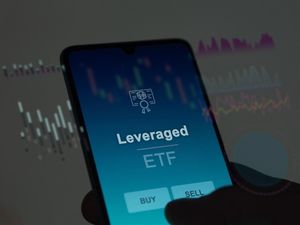Beijing, Dec. 18, 2023 (GLOBE NEWSWIRE) -- WiMi Hologram Cloud Inc. (NASDAQ: WIMI) ("WiMi" or the "Company"), a leading global Hologram Augmented Reality ("AR") Technology provider, today announced that it proposed hybrid recurrent neural network architecture-based human-robot collaboration intent recognition. Hybrid recurrent neural network architecture is a model that combines recurrent neural network (RNN) and convolutional neural network (CNN). RNN is a neural network suitable for modeling and sequential data processing, which can efficiently capture temporal information and contextual relationships in the data through recurrent connections and hidden state updating, it can effectively capture temporal information and contextual relationships in sequence data. CNN can effectively extract data features. Hybrid recurrent neural network combines the advantages of RNN and CNN, which can better capture sequence information and local features, and can better handle intention recognition for human-robot collaboration.
In hybrid recurrent neural network architecture, the input data is first subjected to feature extraction by CNN, then temporal modeling by recurrent layer, and then mapping the features to the intent by a fully connected layer. During the training process, the backpropagation algorithm is used to optimize the model parameters to improve the accuracy of intent recognition.
WiMi's hybrid recurrent neural network architecture-based human-robot collaboration intent recognition mainly consists of:
Input layer: The input layer receives raw data from the human-robot collaborative scenario, such as speech, images, or text. Different types of data need to undergo appropriate pre-processing and feature extraction operations to better represent the information.
Loop layer: The loop layer utilizes RNN to capture the sequence information of the input data. Commonly used RNN units include long short-term memory (LSTM) and gated recurrent unit (GRU). Through recurrent connections, the RNN can model the input sequence and pass the historical information to the subsequent layers.
Convolutional layer: The convolutional layer utilizes CNN to extract local features of the input data. Through convolution operation and pooling operation, CNN can effectively capture spatial and temporal correlations in the input data. The convolutional layer is usually used to process image data or spectral representation of speech data.
Fusion layer: The fusion layer fuses the outputs of the recurrent and convolutional layers to obtain more comprehensive and enriched features, and the fused features are fed into the next layer.
Output layer: The output layer is designed according to the specific task, for example, the classification task can use a fully connected layer and softmax function for multi-category classification. The result of the output layer can represent the category or probability distribution of the human-robot collaborative intent.
Using hybrid recurrent neural network architecture for human-robot collaboration intention recognition can greatly improve the efficiency and quality of human-robot collaboration. Human-robot collaboration intention recognition is an important research area that can help robots to better understand human intentions and goals, thus enabling more intelligent and efficient human-robot collaboration. By accurately understanding human intentions, robots can better respond to and assist humans in accomplishing tasks, thus improving work efficiency. In addition, human-robot collaboration intent recognition can improve the user experience of human-robot interaction. If robots can accurately recognize the human's intention and respond accordingly, the user will feel more natural and comfortable, thus enhancing the user's trust and satisfaction with robots. Human-robot collaborative intent recognition can be applied in various fields, such as smart home, smart office, and smart healthcare, etc., to bring convenience and benefits to people's lives and work.
In the field of hybrid recurrent neural network architecture-based human-robot collaboration intention recognition, there are other research directions that deserve further exploration. Current human-robot collaboration intention recognition mainly relies on text data, but actual human-robot interaction often involves multi-modal information, such as speech, image, video, etc. WiMi will try to fuse multi-modal information into a hybrid recurrent neural network architecture-based human-robot collaboration intention recognition. In the future, WiMi will try to fuse multi-modal information into a hybrid recurrent neural network and utilize migration learning to enhance human-robot collaborative intent recognition, and continuously expand the application scope of human-robot collaborative intent recognition through further research and exploration.
About WIMI Hologram Cloud
WIMI Hologram Cloud, Inc. (NASDAQ: WIMI) is a holographic cloud comprehensive technical solution provider that focuses on professional areas including holographic AR automotive HUD software, 3D holographic pulse LiDAR, head-mounted light field holographic equipment, holographic semiconductor, holographic cloud software, holographic car navigation and others. Its services and holographic AR technologies include holographic AR automotive application, 3D holographic pulse LiDAR technology, holographic vision semiconductor technology, holographic software development, holographic AR advertising technology, holographic AR entertainment technology, holographic ARSDK payment, interactive holographic communication and other holographic AR technologies.
Safe Harbor Statements
This press release contains "forward-looking statements" within the Private Securities Litigation Reform Act of 1995. These forward-looking statements can be identified by terminology such as "will," "expects," "anticipates," "future," "intends," "plans," "believes," "estimates," and similar statements. Statements that are not historical facts, including statements about the Company's beliefs and expectations, are forward-looking statements. Among other things, the business outlook and quotations from management in this press release and the Company's strategic and operational plans contain forward−looking statements. The Company may also make written or oral forward−looking statements in its periodic reports to the US Securities and Exchange Commission ("SEC") on Forms 20−F and 6−K, in its annual report to shareholders, in press releases, and other written materials, and in oral statements made by its officers, directors or employees to third parties. Forward-looking statements involve inherent risks and uncertainties. Several factors could cause actual results to differ materially from those contained in any forward−looking statement, including but not limited to the following: the Company's goals and strategies; the Company's future business development, financial condition, and results of operations; the expected growth of the AR holographic industry; and the Company's expectations regarding demand for and market acceptance of its products and services.
Further information regarding these and other risks is included in the Company's annual report on Form 20-F and the current report on Form 6-K and other documents filed with the SEC. All information provided in this press release is as of the date of this press release. The Company does not undertake any obligation to update any forward-looking statement except as required under applicable laws.
Contacts
WIMI Hologram Cloud Inc.
Email: pr@wimiar.com
TEL: 010-53384913
ICR, LLC
Robin Yang
Tel: +1 (646) 975-9495
Email: wimi@icrinc.com







